LAB REPORT
Science and Technology Making Headlines
Sept. 17, 2021
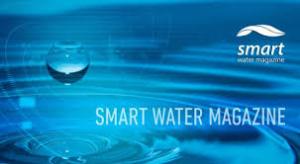
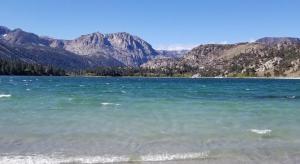
June Lake beach in the Sierra Nevada of California. Climate change is disrupting the water cycle in the Sierra Nevada in ways that are challenging to predict, which lowers society's resilience by limiting water resources. Photo by Mike McGlue/University of Kentucky.
Sierra ecosystems in hot water
Climate change has significantly impacted the natural systems of the Sierra Nevada, including the mountain lakes that are an iconic part of California’s natural beauty.
New research from a Lawrence Livermore National Laboratory scientist and colleagues from the University of Kentucky and Indiana State University shows that lake-sediment cores from a subalpine lake in the eastern Sierra Nevada record significant, sometimes abrupt, changes to lake conditions and ecology over the last three millennia.
The Sierra Nevada’s snowpack serves as the most important water source in the state. Under historical conditions, snow falls on the mountains in the winter and remains frozen until spring. During late spring and summer, meltwater from the snowpack flows into the mountain lakes and streams, ultimately feeding into the major rivers that flow into central and southern California, sustaining vast agricultural fields and urban areas.

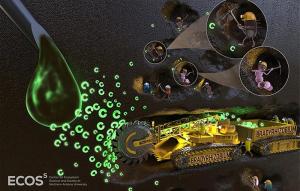
Bacterial “miners” shown in relief working to process soil nutrients, some more efficiently than others. Bradyrhizobium is shown here consolidating its control of carbon from a glucose addition, processing the nutrients with industrial efficiency (in the form of a bucket wheel excavator). Image courtesy of Victor O. Leshyk/ Center for Ecosystem Science and Society, Northern Arizona University.
Gobble it up
Just a few bacterial groups found in ecosystems across the planet are responsible for more than half of carbon cycling in soils, according to new findings from researchers at Lawrence Livermore National Laboratory and Northern Arizona University.
The new research suggests that despite the diversity of microbial taxa found in wild soils gathered from four different ecosystems, only three to six groups of bacteria common in these ecosystems were responsible for most of the soil carbon use.
Soil contains twice as much carbon as all vegetation on earth, and so predicting how carbon is stored in soil and released as CO2 is a critical calculation in understanding future climate dynamics. The research team, which included scientists from Pacific Northwest National Laboratory, University of Massachusetts-Amherst and West Virginia University, is asking how such key bacterial processes should be accounted for in earth system and climate models.


NIF researchers stood at the threshold of fusion ignition after achieving a yield of more than 1.3 megajoules (MJ), a 25 times increase over NIF’s 2018 record yield. Image by John Jett.
A limitless source of clean energy
Laser-based fusion has the potential to generate unlimited energy that is clean and safe. A team of scientists from Lawrence Livermore National Laboratory has recently made a number of advancements that could pave the way for laser-based fusion to become a reality in the future.
Electricity produced from renewable sources like the sun, wind and water is cleaner than the electricity generated from gas or coal. The production of electricity is the number one source of greenhouse gases in the atmosphere.
Climate change is a serious issue that is more prevalent than previously thought, with potentially disastrous results for future generations. Climate scientists have estimated that the world will reach 9C above pre-industrial temperatures by 2100 if current greenhouse gas emissions continue unabated.
The best way to tackle climate change is to move away from polluting energy sources like gasoline and nuclear power and invest in clean energy research and development. One potential source of unlimited clean energy is laser-powered fusion energy.

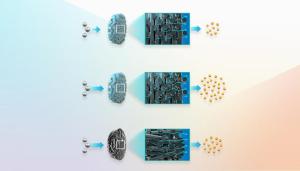
For the first time, LLNL engineers have 3D-printed carbon flow-through electrodes from graphene aerogels. Illustration by Veronica Chen/LLNL.
3D opens the door to reactor performance
Scientists at Lawrence Livermore National Laboratory (LLNL) are 3D printing graphene aerogel flow-through electrodes (FTEs), core components of electrochemical reactors used for converting CO2 and other molecules to useful products.
Benefiting from the design freedom afforded by 3D printing, the researchers demonstrated they could tailor the flow in FTEs, dramatically improving mass transfer – the transport of liquid or gas reactants through the electrodes and onto the reactive surfaces. The work opens the door to establishing 3D printing as a “viable, versatile rapid-prototyping method” for flow-through electrodes and as a promising pathway to maximizing reactor performance, according to researchers.
“At LLNL we are pioneering the use of three-dimensional reactors with precise control over the local reaction environment,” said LLNL engineer Victor Beck. “Novel, high-performance electrodes will be essential components of next-generation electrochemical reactor architectures. This advancement demonstrates how we can leverage the control that 3D printing capabilities offer over the electrode structure to engineer the local fluid flow and induce complex, inertial flow patterns that improve reactor performance.”

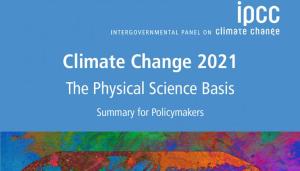
The latest Intergovernmental Panel on Climate Change (IPCC) report was released recently. The Sixth Assessment Report (AR6), approved by 195 IPCC member governments, continues a 31-year history of documenting the latest knowledge on climate change, its causes, the observed change already underway and projections of our potential futures, which will depend on our collective actions to reduce carbon dioxide emissions and mitigate against the worst impacts.
Fueling the fire
A new United Nations climate report lays out in stark terms how climate change is already wreaking havoc on the world, warning that any additional warming will only fuel more extreme disasters.
“It is unequivocal that human influence has warmed the atmosphere, ocean and land,” according to a summary distilling the report’s findings for policymakers. “Human-induced climate change is already affecting many weather and climate extremes in every region across the globe.”
The report is part of the sixth climate assessment released by the UN’s Intergovernmental Panel on Climate Change, which provides the most comprehensive scientific overview of the impacts of the climate crisis so far and an analysis of how bad it could still get.
The latest report stands apart from previous versions for explicitly pointing to the cause of the climate crisis: human-induced climate pollution. Without humans curbing their release of carbon dioxide, methane, and other greenhouse gases, the report warns, deadly heat waves, heavy rains, droughts and other disasters will get more intense and more frequent.
Hundreds of scientists worldwide, including those from Lawrence Livermore, contributed to the report and its key findings.





